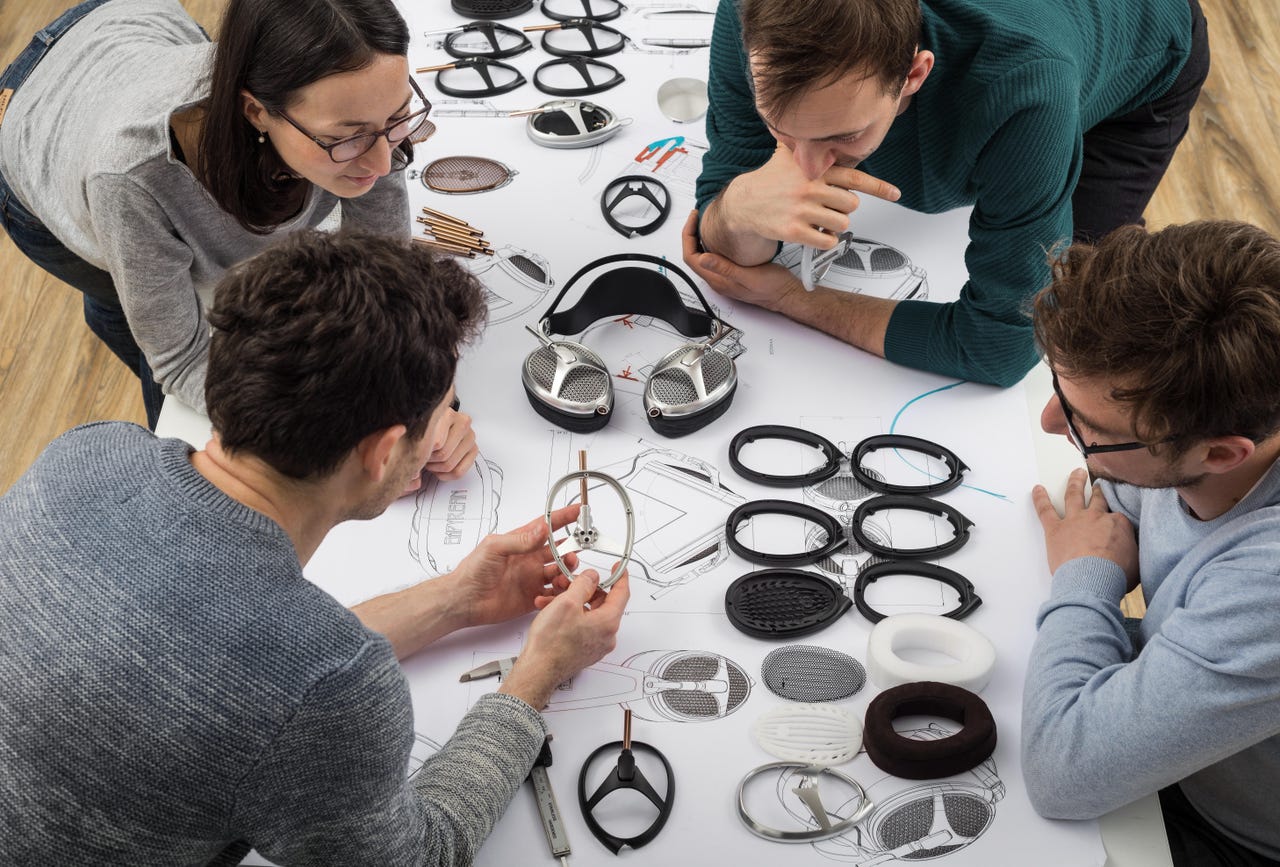World's best headphones? The Cold War story behind these high-end products


Rinaro Isodynamics engineers have developed sophisticated headphones using technology that dates back to the 1970s.
Meze Empyrean headphones bring together Romanian craftsmanship, Ukrainian innovation – and technology acquired by Soviet spies during the Cold War.
Priced at a cool €2,999, or $2,999, the high-end products have received enthusiastic reviews from audiophiles across the world, but few know their true history.
Empyrean is the brainchild of Romania-based designer Antonio Meze, who wanted to create a product that would be sophisticated yet simple.
Also: Best noise-canceling headphones in 2021
He decided to use a carbon-fiber headband, a leather headrest, and hand-polished walnut earcups, drawing inspiration from his childhood in Maramures, a region in northwestern Romania known for its carved wooden gates and centuries-old churches.
"My grandmother's house had many objects that were built by hand, and I could see the craftsmanship," he tells ZDNet.
His company currently employs 25 people in Baia Mare, Romania, and sells the Empyrean headphones in more than 50 countries, including Germany, France, the US, UK, Japan, China, and South Korea.
To build this product, Meze Audio partnered with Ukrainian startup Rinaro Isodynamics, located just across the border in Lviv. The two companies are part of a wave of central and eastern European audio brands that include Kuzma in Slovenia and Thrax in Bulgaria.
Rinaro Isodynamics appeared on the startup scene relatively recently, but the technology it uses dates back to the 1970s.
At that time, Soviet leaders wanted to have better audio equipment and reportedly sent spies to Japan to see what companies such as Sony, Yamaha and Panasonic had developed.
Some of these spies smuggled out premium products, which were later reverse-engineered by meticulous Ukrainian technicians, Pavlo Shymanovych, founder and CEO at Rinaro, says.
USSR leaders established several audio-equipment factories across the territory of today's Ukraine, where engineers started to build products on top of the technology acquired from Japan.
One of those engineers was Konstantin Baklayev, who now serves as Rinaro's R&D lead.
"Developing good-quality products in the Soviet Union was not an easy task because there were restrictions on the materials we could use," he says.
But he found his job fascinating. The high-end audio headphones acquired during the Soviet era differed from standard audio equipment. They used planar magnetic drivers, also called isodynamic drivers.
Simply put, the diaphragm of the headphones is suspended between two permanent magnetic fields and vibrates as electrical current flows through tiny wires.
Also: AirPods Max review: Stunning sound and performance
Such headphones are far more expensive to build than conventional products, which feature a movable diaphragm with a coil in the middle.
However, the added audio performance the advanced headphones brought to the table would have been wasted on the wider public in the 1980s, when music was stored on audio cassettes and vinyl records.
Nevertheless, Soviet engineers kept refining the concepts, innovating and coming up with hacks to bypass the limitations imposed by materials shortages and party leaders.
"When all the Soviet nonsense ended [with the collapse of the USSR in 1991], we had a lot of brilliant ideas that hadn't been put into practice," Baklayev says. "Now we're implementing them, having unprecedented access to resources."
Today, unlike the low-fidelity 1980s, most people listen to high-quality digital music, so planar magnetic technology started to resurface worldwide. Shymanovych realized the potential and a few years ago put €2m ($2.42m) into building a factory from scratch with an up-to-date R&D facility.
"The only thing we kept from the 1980s was the measuring equipment," Shymanovych says. "I told Konstantin [Baklayev] we can buy new equipment, but he said: 'No, we need to keep this one because it's better'."
The Meze Empyrean headphones were first released in 2018. They come in a metal case and are "a tribute to sophistication and art nouveau", says Meze product developer Paul Stet. They feature a skeleton made of lightweight carbon and aluminum, and the leather headband was designed to distribute the weight evenly for comfortable use.
When he designed the product, Meze didn't have a business plan for it, and thought he might fail.
"It was basically me as a designer wanting to make a product exactly as I thought it should be," he says. "Most headphones on the market were made of cheap black plastic and had nothing special about them."
The Meze Empyrean headphones include an isodynamic, hybrid array driver designed by Rinaro, which takes the planar magnetic technology to a new level, the makers say. It uses two independently shaped voice coils instead of just one to improve the focus of the sound wavefront into the ear canal.
There's a switchback coil for lower frequencies positioned in the upper part of the ear, and a spiral coil for middle-high frequencies sits on the lower side.
The voice coils have a frequency range from 4Hz to 110,000Hz, much wider than typical dynamic headphones, which offer between 20Hz and 20,000Hz. Also, according to the two companies, the total harmonic distortion measures less than 0.1% in the whole frequency range.
The two companies describe the sound as organic, thick, satisfying, and balanced. They say because even the earpads can influence the listening experience, the product comes with two types of attachable pads, Alcantara, which highlights the bass, and leather, which offers more detail.
Antonio Meze says his team and partners wanted to create durable headphones that people would enjoy using for a long time.
"We don't want to promote consumerism," he says. "We want to encourage people to buy only a handful of products that they'll use for a long time. It's better for the planet."